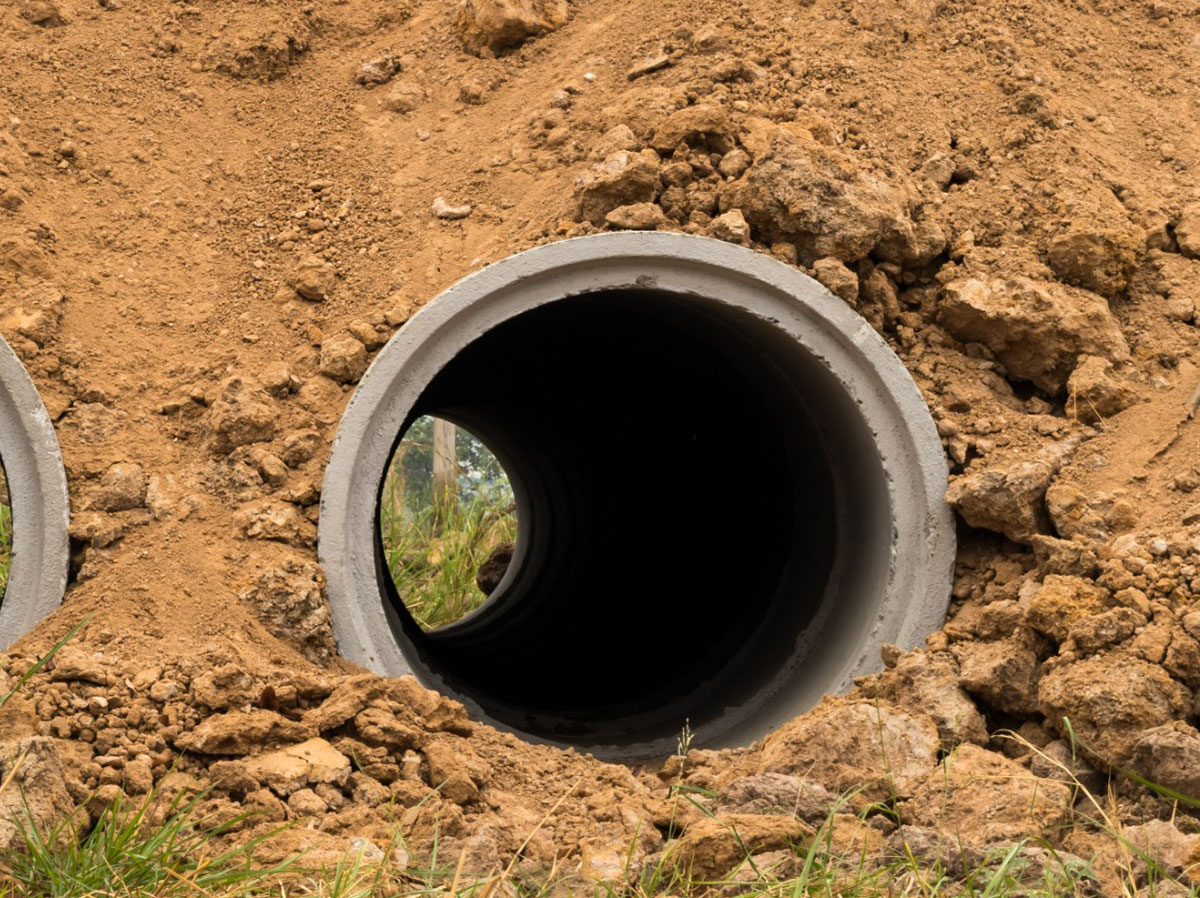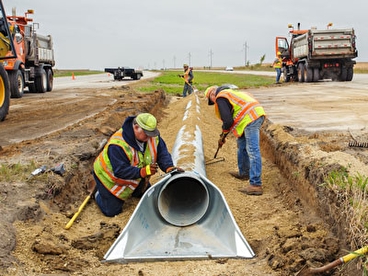Thorough Underbrush Clearing for Land Management
Thorough Underbrush Clearing for Land Management
Blog Article
Culvert Installation Facilitated: Step-by-Step Overview for Success
Setting up culverts might look like an uncomplicated task, however guaranteeing an effective result needs cautious planning and implementation. From choosing the ideal culvert dimension to integrating appropriate water drainage procedures, each action in the installment procedure plays an essential duty in the functionality and longevity of the culvert system. By adhering to a systematic technique and focusing on key details, the setup can proceed smoothly, decreasing possible concerns down the line. Remain tuned to reveal the important steps and considerations that can make culvert installment a smooth and successful endeavor.
Choosing the Right Culvert Size
Choosing the proper culvert size is critical for guaranteeing efficient water circulation and architectural stability in culvert setup jobs - Pad Construction. The size of the culvert straight influences the flow capability of water with the structure. A culvert that is as well tiny can result in flooding and overflow, while one that is also large might lead to decreased water rate, possibly creating sediment build-up and blockages
To determine the ideal culvert dimension, aspects such as the watershed area, optimal flow rates, and hydraulic efficiency demand to be very carefully taken into consideration. Estimations based on these specifications help in picking a size that can properly handle the anticipated water volume while minimizing the threat of blockages and architectural failure.
It is important to seek advice from engineering standards and requirements to make certain that the selected culvert size meets the project requirements and regional policies (Pad Construction). By selecting the ideal culvert size, job managers can optimize water flow, prevent potential problems, and enhance the general effectiveness and long life of the culvert installment
Preparing the Installation Website
Reliable culvert installment necessitates careful prep work of the installment site to guarantee ideal structural assistance and performance. Prior to beginning the installation process, it is crucial to clear the website of any debris, plant life, or blockages that can impede the culvert's positioning. Ensuring a level structure is necessary for the appropriate placement and security of the culvert. This may entail grading the site to produce a smooth, also surface that can effectively support the weight of the culvert and any expected lots. Furthermore, proper compaction of the soil beneath the culvert is needed to stop clearing up or shifting in time.
Additionally, it is very important to take into consideration variables such as dirt make-up, groundwater degrees, and ecological impacts when preparing the installation website. Conducting a comprehensive site analysis can aid identify any kind of possible challenges or threats that may impact the culvert's performance. By putting in the time to prepare the installation site appropriately, try here you can aid guarantee a successful culvert installment that meets architectural requirements and guarantees lasting performance.
Positioning the Culvert Appropriately

The grade at which the culvert is positioned is vital for preserving a proper slope for water flow. Furthermore, the culvert ought to be oriented appropriately to guarantee that the inlet and outlet are in the proper places. Pad Construction.
Backfilling and Condensing the Soil
Appropriate backfilling and compaction of the soil around the culvert is crucial to ensure stability and prevent potential concerns in the future. As soon as the culvert is correctly placed, the next critical step is to backfill the location around it with appropriate product.
After putting the backfill material, it is essential to small it in layers of consistent density. Using a compactor or a mechanical Read More Here meddle, portable the dirt delicately to prevent damaging the culvert. Compaction assists in minimizing the possibilities of settlement and makes certain consistent assistance around the culvert. It is essential to portable the dirt evenly on all sides of the culvert to keep its architectural honesty.
Proper backfilling and compaction not only give stability to the culvert however also aid in stopping dirt erosion and maintaining the longevity of the culvert system.
Making Certain Proper Drainage Assimilation
Incorporating efficient drainage services plays a vital function in the total capability and longevity of culvert installments. Proper drainage assimilation is crucial for taking care of water circulation, stopping disintegration, and making certain the structural stability of the culvert system. To attain this, it is essential to design an extensive drainage strategy that takes into consideration elements such as the volume of water anticipated, the topography of the area, and the sort of dirt existing.

Additionally, integrating attributes like erosion control measures, such as riprap or plants, can better boost the efficiency of the drain system. By meticulously preparing and applying these drain options, culvert installations can operate effectively and hold up against the test of time.
Verdict
To conclude, appropriate culvert installation is essential for keeping efficient drain systems. By choosing the right culvert dimension, preparing the installment website, positioning the culvert correctly, backfilling and condensing the dirt, and making sure appropriate drainage assimilation, success can be attained. Adhering to these actions will aid make sure the long life and effectiveness of the culvert, inevitably adding to the general success of the drain system.
Report this page